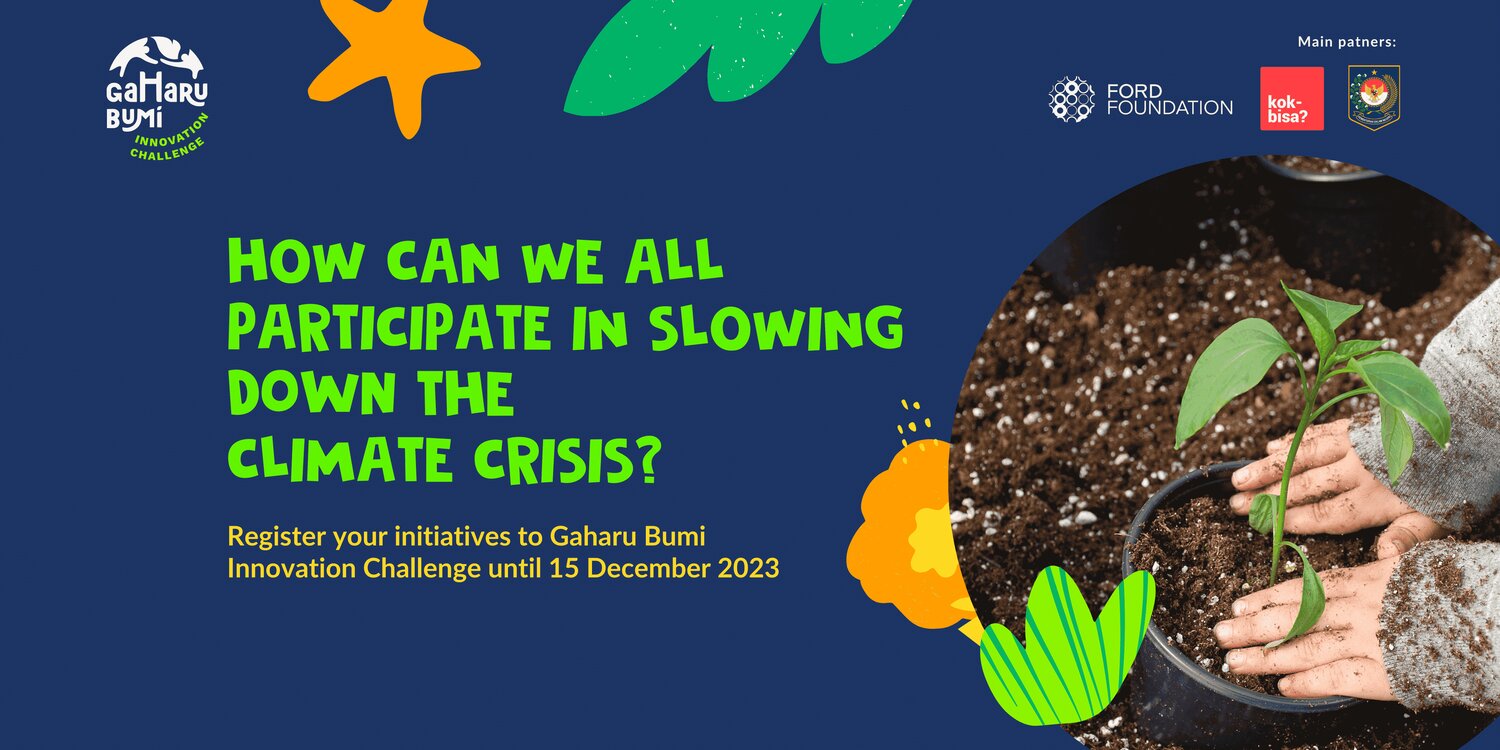
Climate Crisis Additional
The climate crisis is a disaster that is happening all over the world in different shapes and forms; from droughts, hurricanes, floods, unpredictable weather patterns, rising sea levels that are submerging coastal areas, crop failures, pests, and many others; caused by the warming of the earth's temperature, far higher thanthe normal warming that has occurred throughout the earth's history, in a rate that is accelerating faster than any points in history. Scientists have agreed that human activitiesare the main driver of thisrapid warming; which began withindustrial revolution in the 1950s.This warming has brought the earth to the brink of a temperature rise of 1.5 degrees Celsius, causing many serious consequences that are now called the climate crisis.
What are the causes of the climate crisis?
The natural heating of the earth is usually channeled by the earth into the atmosphere, where this heat is then absorbed or channeled into outer space. However, the industrialization era, which on the one hand brought many conveniences and welfare to humans, in fact also acceleratingtemperature rise due to the large amount of carbon emissions (link to carbon emission page) released into the atmosphere. The biggest emitters of carbon emissions come from deforestation and land use, the use of transportation powered by fossil fuels (gasoline or diesel), the use of fossil fuels for factories, agricultural activities, animal husbandry, waste and almost all modern human needs. These carbon emissions are collected in the atmosphere to form a kind of blanket that traps heat, so heatis not channeledproperly and the earth is getting hotter.
What are the consequences of the climate crisis?
The impact of climate crisis is already impacting every country, affecting more than 20 million people and causing trillions of dollars in losses.
Some examples of the impact are the melting of icebergs in the poles which causesraising sea levels, thus drowning coastal areas and small islands all over the world. In Indonesia, this can be seen in Demak.
Warmer weather also makes forest fires more common. In Australia and California, for example, forest fires are getting worse and more frequent. In addition to fires, storms, floods and many more disasters due to extreme weather have caused a lot of economic, human and ecosystem losses. Irregular weather and seasons (hot winters and relatively mild summers) also cause crop failures, which if they continue to occur will threaten the availability of food for every human being. The increasingly warmer climate also threatens many of the world's drinking water sources.
Kompas Daily on June 5th,2023 explained that the city of Berau in East Kalimantan has warmed 0.95 degrees Celsius in the last 18 years. This increase in temperature threatens the lives of many living things, including animals and plants that cannot adapt, thereby threatening extinction and ecosystem imbalances which will eventually impact humans in the form of disease, disasters, and loss of natural resources. Covid-19 is a global health threat phenomenon which is linked todeforestation and rising temperatures. Deforestation and rising temperatures are driving the migration of animals to places they never migrated before.Contacts of animals that have never been in contactbefore encouraged mutations of viruses which sparked Covid-19. If the animals’ lives were not threatened, this mutation could have been minimalized.
How to solve the climate crisis?
Globally, all modern human activities rely on carbon emissions.To solve the climate crisis, every aspect of human life must change significantly so that it is no longer dependent on:
- Energy sources from fossils (which are mined by cutting down primary forests)
- Products produced as a result of land conversion from forests. d. Plastics, especially single-use ones
- Clothing, especially from non-natural fibers containing plastics
- Food, especially meat, and non-organic agricultural produce
- Fishery products taken by destroying coral reefs
New ways of life, new social systems, which can be innovative and creative while do not increase carbon emissionsand do not create wider social inequalities is the key for humans to continue thrive alongside other living beings on this planet.
Even though it looks like these are big difficult things, there are many changemakers from around the world, including from Indonesia, who are working to create this new world; a world where we no longer depend on systems that are destructive, harmful, and unjust. As it turns out, this complex problem invites the opportunity for a great deal of change, which can be done by anyone, and it starts from so many things that are close to us. The following are small things that have been agreed upon as behaviors that slow climate change:
- Turn off the lights and unplug when the power tool is not being used.
- Using public transportation, walking or cycling instead of using taxis, private cars or private motorized vehicles
- Reducing meat consumption, especially beef and goat
- Reduce the use of resources; reduce the purchase of clothing, food consumption, and purchase of goods, especially those that cannot be decomposed and come from products that destroy primary forests
- Are there other things you have done that have reduced carbon emissions?
This change is not enough only when done individually. This change must occur massively and systematically. Therefore, everyone must be a driver of change, we must be increasingly vocal about asking for alternative systems and ways of life that do not lead us to ecosystem destruction. Look for examples that have been made by changemakers from all over the world, including from Indonesia! (link to changemaker stories)
Reference:
- https://krisisiklim.com/apa/
- https://lindungihutan.com/blog/pembebab-krisis-iklim-dan-dampaknya/#rb-apa-yang-dimaksud-dengan-krisis-iklim
- https://www.bbc.com/news/science-environment-24021772
- https://www.kompas.id/baca/humaniora/2023/06/04/bumi-memanas-ruang-live-memempit
- https://www.hsph.harvard.edu/c-change/subtopics/coronavirus-and-climate-change/